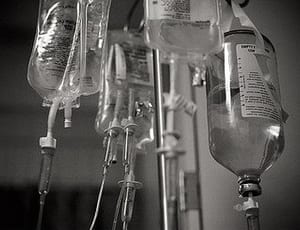5/19/2015
Yesterday we wrote about the warning issued by the FDA regarding SGLT2 type 2 diabetes medications. Today, I want to share the treatment regimen for SGLT2-related ketoacidosis.
Always consult your physician before making changes in any medication protocol. If you find yourself experiencing any of the symptoms of ketoacidosis, get to the emergency room immediately!
Once there, doctors may treat you in the ER or admit you to the hospital. The treatment regimen for SGLT2-related ketoacidosis usually involves three areas:
- Fluid replacement. Typically, you will have lost a great deal of fluid due to excessive urinations. The first step is rehydration, either orally or intravenously. This also helps to dilute the excess sugar in your bloodstream.
- Electrolyte replacement. Your blood carries vital minerals, such as sodium, potassium and chloride. These minerals have a slight electric charge, hence the name electrolytes. If you have low levels or the absence of insulin your electrolyte levels may be serious depressed. This can cause problems with your heart, muscles and nerve cells. Electrolyte replacement is usually done intravenously.
- Insulin therapy. The processes behind ketoacidosis are reversed with insulin therapy, also intravenously. Once your blood sugar is below 240 mg/dL (13.3 mmol/L) and your blood is no longer acidic, doctors may stop IV insulin therapy and have you resume your normal routine.
Due to the severe effects of ketoacidosis, specifically the electrolyte imbalance, you may be required to stay in the hospital for cardiac evaluation. The may be necessary to determine whether your heart was harmed during the episode of ketoacidosis.
Source:
Diabetic ketoacidosis



Join the conversation!